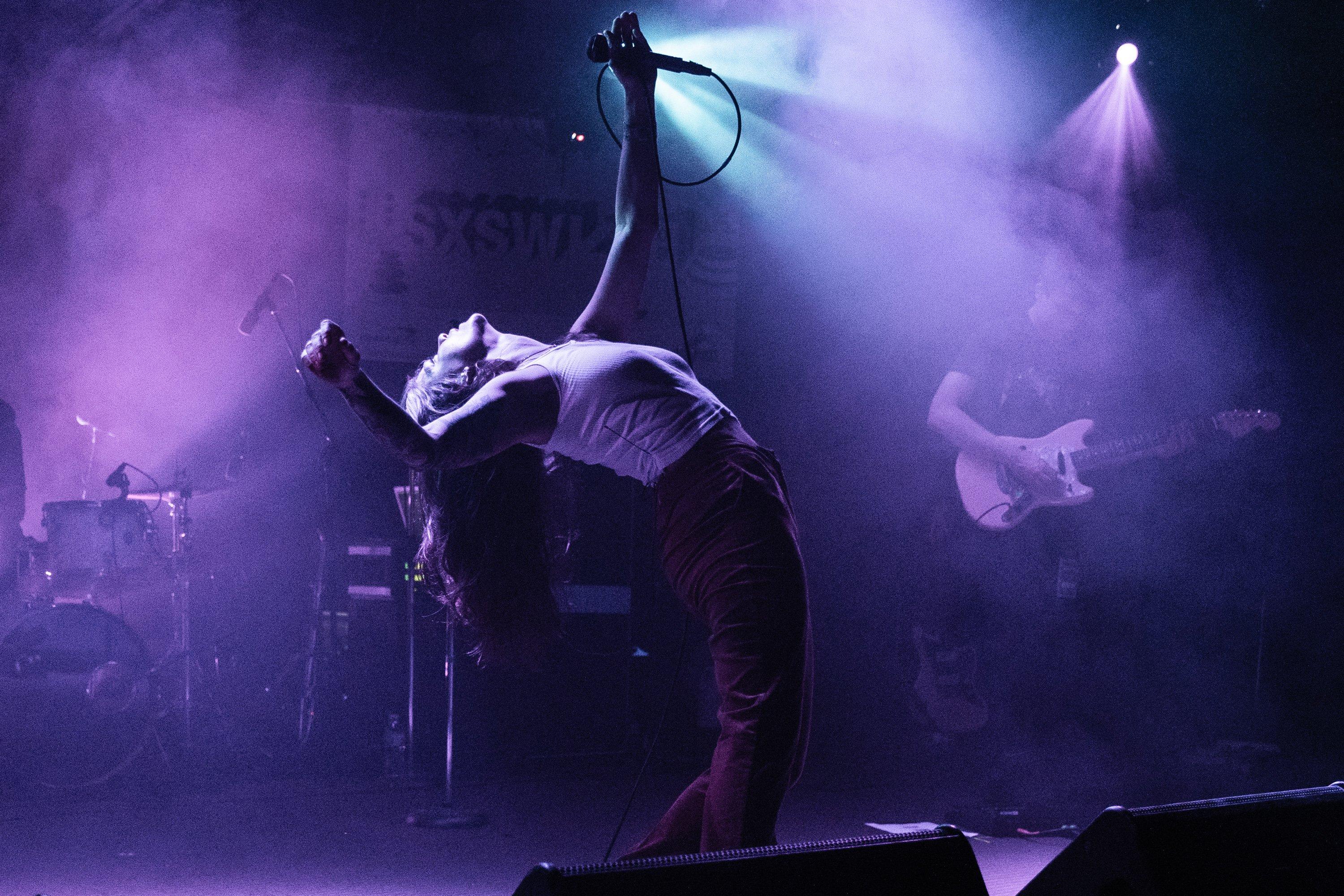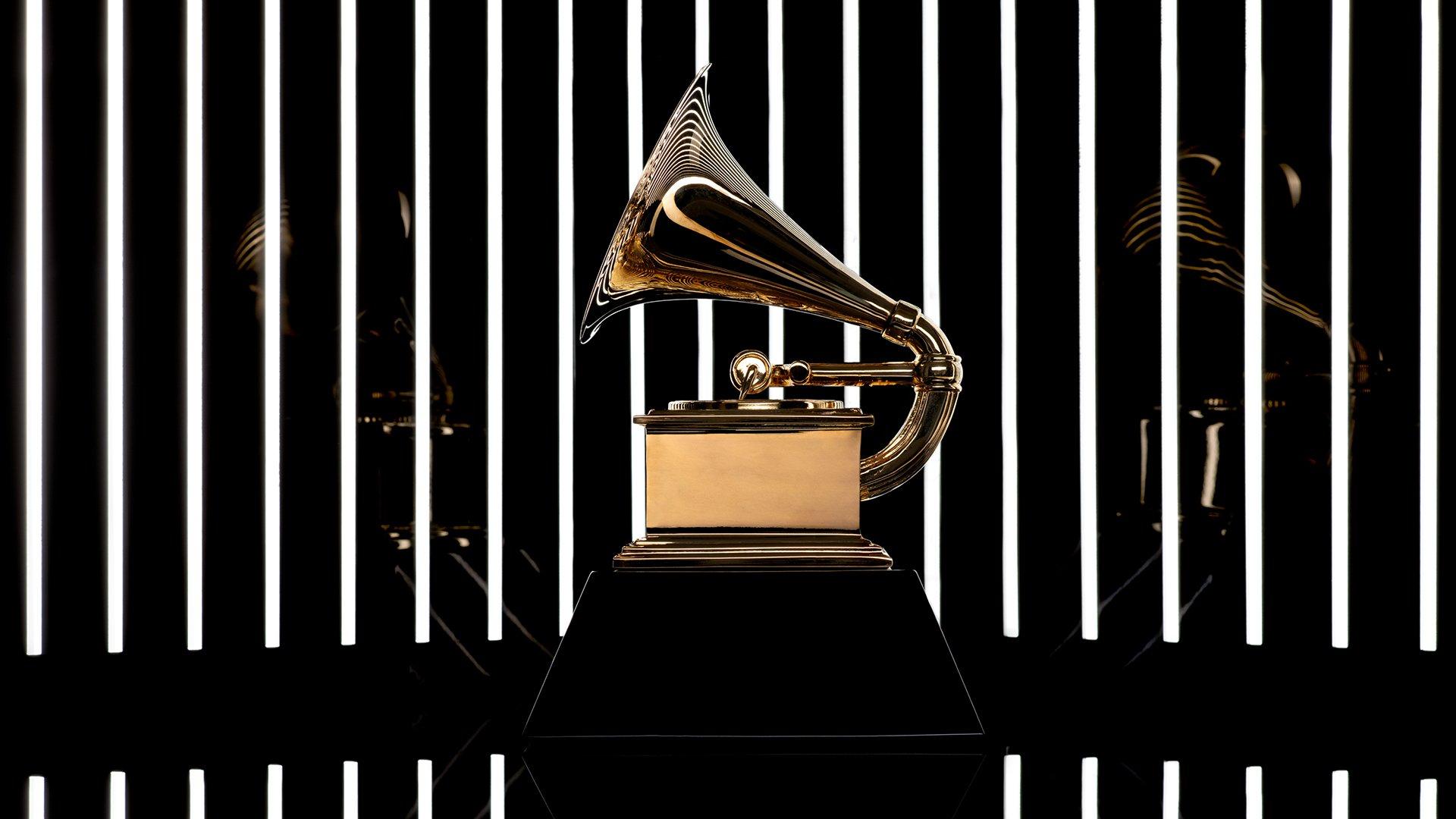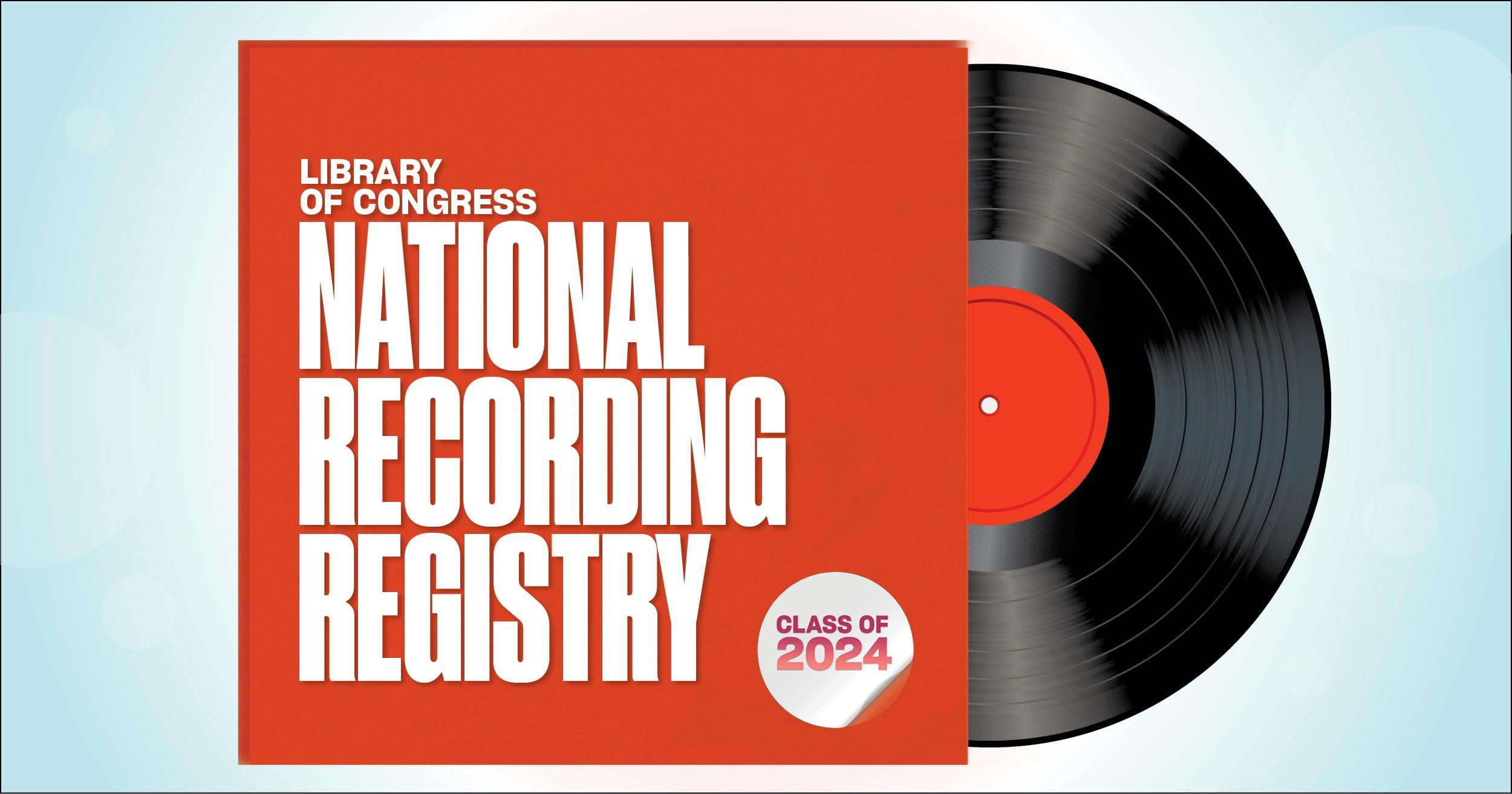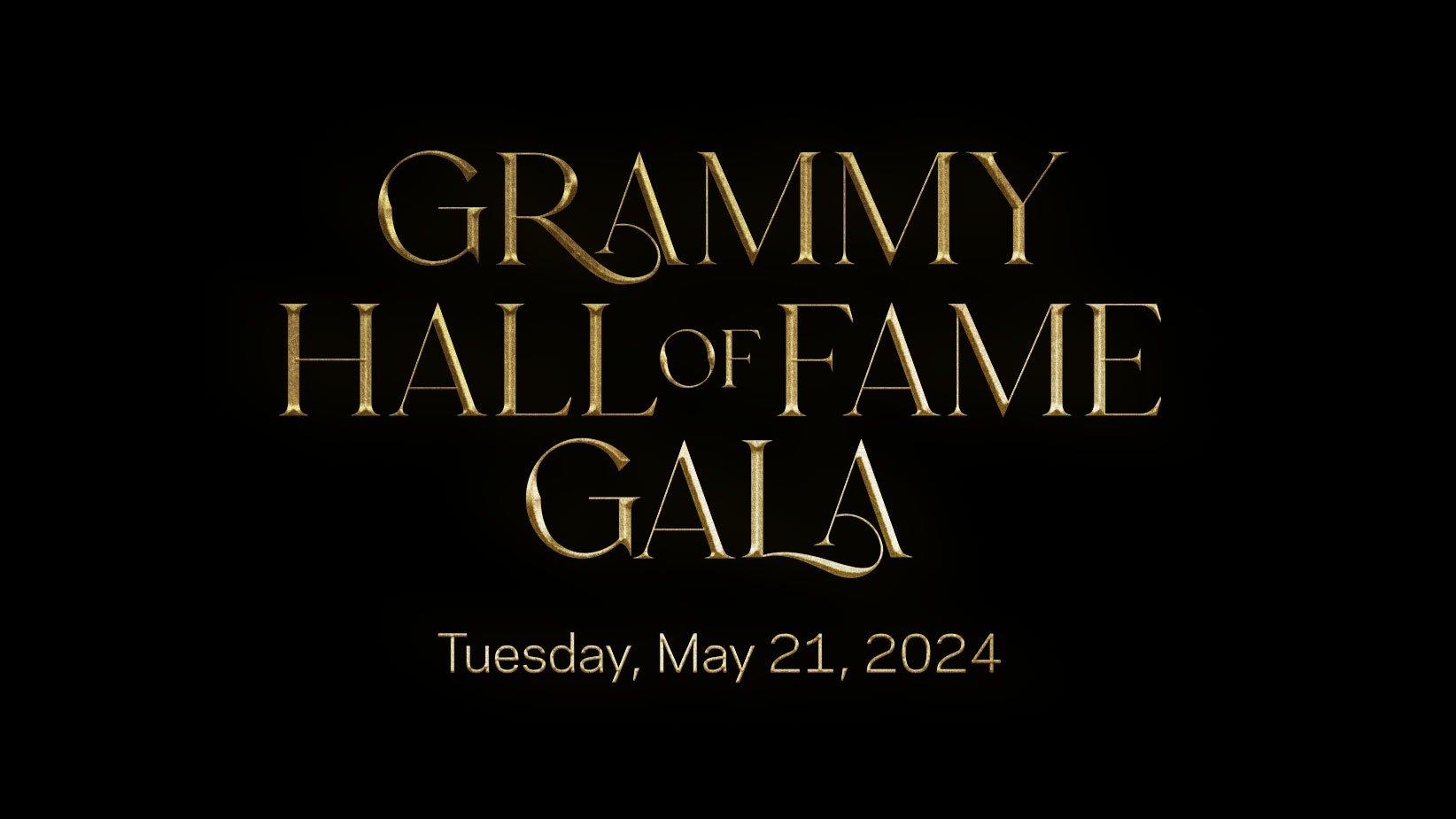Photo: Lorne Thomson/Redferns/Getty Images

Donna Missal at SXSW 2019
news
Report: How Music Creates Jobs, Drives Tourism, Improves Wellness & More
Recording Academy partner Sound Diplomacy unleashes "a set of tools, case studies and lessons to increase the value of music in your city"
For anyone working in the music world, Austin, Texas is the place to be in mid-March each year. South By Southwest brings together the industry's brightest minds, biggest players and sharpest talents to explore the business and craft of music. Attendees network, listen and soak up wisdom to bring home and implement in their own music communities, wherever they may be. For over three decades, this ritual has helped music professionals tackle the challenges of building and sustaining music in their city.
<blockquote class="twitter-tweet" data-lang="en"><p lang="en" dir="ltr">Who does your music policy impact? Who is responsible for music policy in a city? Find out answers to these burning questions & more in The Music Cities Manual, available now at <a href="https://t.co/xNc2Feje4r">https://t.co/xNc2Feje4r</a> <a href="https://t.co/yLeU32Bf3I">pic.twitter.com/yLeU32Bf3I</a></p>— Sound Diplomacy (@SoundDiplomacy) <a href="https://twitter.com/SoundDiplomacy/status/1106214710792384512?ref_src=twsrc%5Etfw">March 14, 2019</a></blockquote>
<script async src="https://platform.twitter.com/widgets.js" charset="utf-8"></script>
In the spirit of this connectivity of resources, and to coincide with this year's SXSW, international strategic consultants Sound Diplomacy released a special report titled "The Music Cities Manual: How Music Increases Economic, Social And Cultural Growth In Your City." The extensive report details the what, why and how of supporting music locally through everything from city policy to education and communication and beyond, providing a fresh and tangible idea bank for music people in cities and towns of all sizes to spur and sustain growth.
As partners of the Recording Academy, Sound Diplomacy shares the mission of supporting music by thinking big but starting small and understanding the power of local music markets have to lift up the industry at large. The Academy's 12 Chapters serve music communities nationwide based on the core philosophy that when local music economies innovate and thrive, the entire community benefits. Many of the principles in Sound Diplomacy's report speak directly to the work the Academy does each day to keep music strong across a diverse array of local marketplaces.
Inside The Music Cities Manual
"The Music Cities Manual" describes itself as "a set of tools, case studies and lessons to increase the value of music in your city," i.e., a report for everyone involved in the music process from musicians to developers, city government to bar owners and festivals to hoteliers. The report also showcases music's uncanny ability to create jobs, drive tourism, enhance social inclusion and even improve wellness. However, as the report points out, "few cities understand how to plan, manage and develop music for economic, social and cultural gain."
In other words, how can cities best optimize the power of music to benefit their local economy?
"Music pumps from speakers in shopping malls and metro stations, hospitals and car parks. From choirs in churches to the call to prayer, from the boardrooms of our multinational record labels to the basement of a pub, music fosters creativity, dialogue, creates commerce and incubates talent."
Music As Infrastructure
In order to solve a problem, we must first understand it. Sound Diplomacy's method outlines 13 key indicators of a thriving music policy, centering around the idea that music is infrastructure. This means city governance declaring, through official communication, music's importance to its community. Let's look to the Midwest: The report cites Chicago's 2007 Chicago Music Policy as one of the first to send this message to not only its own local community, but to people everywhere about the importance of music's role in Chicago.
The report's 13 key indicators are chock-full of resources for action items such as creating a coalition, asset mapping, sparking tourism, supporting venues, encouraging entrepreneurs, expanding music education, and prioritizing affordability. All of these measures speak to a connectivity between creatives, policymakers and business owners that can grow a city's music community in a healthy and lasting way.
Cities As Agents Of Change
Sound Diplomacy also presents several case studies, taking a closer look at Melbourne, Australia's "Agent Of Change" principle, which set new obligations on property developers to adequately soundproof buildings within 50 feet of an existing venue, London's Music Venue Trust task force, which provided an outline for the city's grassroots venues to thrive, and New York City's repeal of its outdated Cabaret Law, making the Big Apple much for more friendlier for live music and entertainment. These real-world cases provide easily relatable change examples, and considering the sheer size of the cities referenced, the notion of making an impact in smaller music communities seems far less daunting.
<blockquote class="twitter-tweet" data-lang="en"><p lang="en" dir="ltr">Our <a href="https://twitter.com/hashtag/NewYork?src=hash&ref_src=twsrc%5Etfw">#NewYork</a> Chapter celebrated the 61st <a href="https://twitter.com/hashtag/GRAMMYs?src=hash&ref_src=twsrc%5Etfw">#GRAMMYs</a> nominees, including producers, songwriters, and engineers earlier this week. <br><br>Find out who takes home GRAMMY gold on Feb. 10! <a href="https://t.co/3XnYTnFYLn">pic.twitter.com/3XnYTnFYLn</a></p>— Recording Academy / GRAMMYs (@RecordingAcad) <a href="https://twitter.com/RecordingAcad/status/1090800515556855808?ref_src=twsrc%5Etfw">January 31, 2019</a></blockquote>
<script async src="https://platform.twitter.com/widgets.js" charset="utf-8"></script>
Creating Inter-City Music Networks
In fact, the report goes another step to show how connection between music cities can benefit local markets on a global scale, examining Music Cities Network, a resource for improving communication and cooperation between music communities around the world. This is just one tool the report offers toward its encouragement to "be international," by starting, "With your sister cities and existing partnerships in other municipal departments, from tourism to economic development."
This top-down and bottom-up approach provides everyone who touches or is affected by music with steps to take toward a stronger community. And the best news is the benefits of a healthy music city go beyond cultural, social and even economic areas. Music's ability to improve health and wellbeing means, as the report states, "Better, happier, more efficient people, from birth to death."
<iframe width="620" height="349" src="https://www.youtube.com/embed/NTz0cBwSn54" frameborder="0" allow="accelerometer; autoplay; encrypted-media; gyroscope; picture-in-picture" allowfullscreen></iframe>
As thousands descend upon Austin and SXSW 2019 kicks off its Music Conference, the Sound Diplomacy report provides the framework to implement new ideas across the musical landscape in any town, making the adage of "think globally, act locally" more than a bumper sticker.
Likewise, the Recording Academy continues its work on behalf of music creators across many tiers of the industry, from local events to educate and connect members to game-changing Advocacy work on Capitol Hill. Through these tireless efforts, and projects such as working with Sound Diplomacy in its Chapter cities, the Academy continues to support and foster a better tomorrow for music.

Photo: Jathan Campbell
list
How Much Is A GRAMMY Worth? 7 Facts To Know About The GRAMMY Award Trophy
Here are seven facts to know about the actual cost and worth of a GRAMMY trophy, presented once a year by the Recording Academy at the GRAMMY Awards.
Since 1959, the GRAMMY Award has been music’s most coveted honor. Each year at the annual GRAMMY Awards, GRAMMY-winning and -nominated artists are recognized for their musical excellence by their peers. Their lives are forever changed — so are their career trajectories. And when you have questions about the GRAMMYs, we have answers.
Here are seven facts to know about the value of the GRAMMY trophy.
How Much Does A GRAMMY Trophy Cost To Make?
The cost to produce a GRAMMY Award trophy, including labor and materials, is nearly $800. Bob Graves, who cast the original GRAMMY mold inside his garage in 1958, passed on his legacy to John Billings, his neighbor, in 1983. Billings, also known as "The GRAMMY Man," designed the current model in use, which debuted in 1991.
How Long Does It Take To Make A GRAMMY Trophy?
Billings and his crew work on making GRAMMY trophies throughout the year. Each GRAMMY is handmade, and each GRAMMY Award trophy takes 15 hours to produce.
Where Are The GRAMMY Trophies Made?
While Los Angeles is the headquarters of the Recording Academy and the GRAMMYs, and regularly the home of the annual GRAMMY Awards, GRAMMY trophies are produced at Billings Artworks in Ridgway, Colorado, about 800 miles away from L.A.
Is The GRAMMY Award Made Of Real Gold?
GRAMMY Awards are made of a trademarked alloy called "Grammium" — a secret zinc alloy — and are plated with 24-karat gold.
How Many GRAMMY Trophies Are Made Per Year?
Approximately 600-800 GRAMMY Award trophies are produced per year. This includes both GRAMMY Awards and Latin GRAMMY Awards for the two Academies; the number of GRAMMYs manufactured each year always depends on the number of winners and Categories we award across both award shows.
Fun fact: The two GRAMMY trophies have different-colored bases. The GRAMMY Award has a black base, while the Latin GRAMMY Award has a burgundy base.
Photos: Gabriel Bouys/AFP via Getty Images; Frederick M. Brown/Getty Images
How Much Does A GRAMMY Weigh?
The GRAMMY trophy weighs approximately 5 pounds. The trophy's height is 9-and-a-half inches. The trophy's width is nearly 6 inches by 6 inches.
What Is The True Value Of A GRAMMY?
Winning a GRAMMY, and even just being nominated for a GRAMMY, has an immeasurable positive impact on the nominated and winning artists. It opens up new career avenues, builds global awareness of artists, and ultimately solidifies a creator’s place in history. Since the GRAMMY Award is the only peer-voted award in music, this means artists are recognized, awarded and celebrated by those in their fields and industries, ultimately making the value of a GRAMMY truly priceless and immeasurable.
In an interview featured in the 2024 GRAMMYs program book, two-time GRAMMY winner Lauren Daigle spoke of the value and impact of a GRAMMY Award. "Time has passed since I got my [first] GRAMMYs, but the rooms that I am now able to sit in, with some of the most incredible writers, producers and performers on the planet, is truly the greatest gift of all."
"Once you have that credential, it's a different certification. It definitely holds weight," two-time GRAMMY winner Tariq "Black Thought" Trotter of the Roots added. "It's a huge stamp as far as branding, businesswise, achievement-wise and in every regard. What the GRAMMY means to people, fans and artists is ever-evolving."
As Billboard explains, artists will often see significant boosts in album sales and streaming numbers after winning a GRAMMY or performing on the GRAMMY stage. This is known as the "GRAMMY Effect," an industry phenomenon in which a GRAMMY accolade directly influences the music biz and the wider popular culture.
For new artists in particular, the "GRAMMY Effect" has immensely helped rising creators reach new professional heights. Samara Joy, who won the GRAMMY for Best New Artist at the 2023 GRAMMYs, saw a 989% boost in sales and a 670% increase in on-demand streams for her album Linger Awhile, which won the GRAMMY for Best Jazz Vocal Album that same night. H.E.R., a former Best New Artist nominee, saw a massive 6,771% increase in song sales for her hit “I Can’t Breathe” on the day it won the GRAMMY for Song Of The Year at the 2021 GRAMMYs, compared to the day before, Rolling Stone reports.
Throughout the decades, past Best New Artist winners have continued to dominate the music industry and charts since taking home the GRAMMY gold — and continue to do so to this day. Recently, Best New Artist winners dominated the music industry and charts in 2023: Billie Eilish (2020 winner) sold 2 million equivalent album units, Olivia Rodrigo (2022 winner) sold 2.1 million equivalent album units, and Adele (2009 winner) sold 1.3 million equivalent album units. Elsewhere, past Best New Artist winners have gone on to star in major Hollywood blockbusters (Dua Lipa); headline arena tours and sign major brand deals (Megan Thee Stallion); become LGBTIA+ icons (Sam Smith); and reach multiplatinum status (John Legend).
Most recently, several winners, nominees and performers at the 2024 GRAMMYs saw significant bumps in U.S. streams and sales: Tracy Chapman's classic, GRAMMY-winning single "Fast Car," which she performed alongside Luke Combs, returned to the Billboard Hot 100 chart for the first time since 1988, when the song was originally released, according to Billboard. Fellow icon Joni Mitchell saw her ‘60s classic “Both Sides, Now,” hit the top 10 on the Digital Song Sales chart, Billboard reports.
In addition to financial gains, artists also experience significant professional wins as a result of their GRAMMY accolades. For instance, after she won the GRAMMY for Best Reggae Album for Rapture at the 2020 GRAMMYs, Koffee signed a U.S. record deal; after his first GRAMMYs in 2014, Kendrick Lamar saw a 349% increase in his Instagram following, Billboard reports.
Visit our interactive GRAMMY Awards Journey page to learn more about the GRAMMY Awards and the voting process behind the annual ceremony.

Graphic & Photos Courtesy of GRAMMY GO
news
Recording Academy & Coursera Partner To Launch GRAMMY GO Online Learning Initiative
Class is in session. As part of the Recording Academy's ongoing mission to empower music's next generation, GRAMMY Go offers digital content in specializations geared to help music industry professionals grow at every stage of their career.
The Recording Academy has partnered with leading online learning platform Coursera on GRAMMY GO, a new online initiative to offer classes tailored for music creators and industry professionals.
This partnership empowers the next generation of the music community with practical, up-to-the moment digital content that provides wisdom for both emerging and established members of the industry. Continuing the Academy’s ongoing mission to serve all music people, courses cover a variety of specializations tailored to creative and professional growth.
GRAMMY GO on Coursera includes courses taught by Recording Academy members, featuring GRAMMY winners and nominees and offers real-life lessons learners can put to work right away.
Starting today, enrollment is open for GRAMMY GO’s first Coursera specialization, "Building Your Audience for Music Professionals," taught by Joey Harris, international music/marketing executive and CEO of Joey Harris Inc. The course features Rock & Roll Hall of Fame inductee and five-time GRAMMY winner Jimmy Jam, 10-time GRAMMY nominee Janelle Monáe and three-time GRAMMY winner and the 2024 GRAMMYs Best New Artist Victoria Monét. This foundational specialization will help participants gain the skills, knowledge and confidence to build a strong brand presence and cultivate a devoted audience within the ever-changing music industry.
The partnership’s second course, launching later this summer, aims to strengthen the technological and audio skills of a music producer. "Music Production: Crafting An Award-Worthy Song" will be taught by Carolyn Malachi, Howard University professor and GRAMMY nominee, and will include appearances by GRAMMY winner CIRKUT, three-time GRAMMY winner Hit-Boy, artist and celebrity vocal coach Stevie Mackey, five-time GRAMMY nominee and Recording Academy CEO Harvey Mason jr., and 15-time GRAMMY winner Judith Sherman. Pre-enrollment for "Music Production: Crafting An Award-Worthy Song" opens today.
"Whether it be through a GRAMMY Museum program, GRAMMY Camp or GRAMMY U, the GRAMMY organization is committed to helping music creators flourish, and the Recording Academy is proud to introduce our newest learning platform, GRAMMY GO, in partnership with Coursera," said Panos A. Panay, President of the Recording Academy. "A creator’s growth path is ongoing and these courses have been crafted to provide learners with the essential tools to grow in their professional and creative journeys."
"We are honored to welcome GRAMMY GO, our first entertainment partner, to the Coursera community," said Marni Baker Stein, Chief Content Officer at Coursera. "With these self-paced online specializations, aspiring music professionals all over the world have an incredible opportunity to learn directly from iconic artists and industry experts. Together with GRAMMY GO, we can empower tomorrow's pioneers of the music industry to explore their passion today."
GRAMMY GO also serves as the music community’s newest digital hub for career pathways and editorial content that provides industry insights for members of the industry; visit go.grammy.com for more. For information and enrollment, please visit the landing pages for "Building Your Audience for Music Professionals" and "Music Production: Crafting An Award-Worthy Song."

Photo: Library of Congress
news
National Recording Registry Inducts Music From The Notorious B.I.G., Green Day, Blondie, The Chicks, & More
Recordings by the Cars, Bill Withers, Lily Tomlin, Doug E. Fresh and Slick Rick, and the all-Black 369th U.S. Infantry Band after World War I are also among the 25 selected for induction.
As a founding member of the National Recording Preservation Board, the Recording Academy was instrumental in lobbying and getting the board created by Congress. Now, the Library of Congress has added new treasures to the National Recording Registry, preserving masterpieces that have shaped American culture.
The 2024 class not only celebrates modern icons like Green Day’s punk classic Dookie and Biggie Smalls' seminal Ready to Die, but also honors vintage gems like Gene Autry’s "Rudolph, the Red-Nosed Reindeer" and Perry Como’s hits from 1957. These recordings join over 650 titles that constitute the registry — a curated collection housed within the Library’s vast archive of nearly 4 million sound recordings.
Librarian of Congress Carla Hayden announced these additions as essential pieces of our nation’s audio legacy, each selected for their cultural, historical, or aesthetic importance. This selection process is influenced by public nominations, which hit a record number this year, emphasizing the public's role in preserving audio history.
Read more: Inside Green Day's Intimate "Right Here, Right Now" Global Climate Concert In San Francisco
"The Library of Congress is proud to preserve the sounds of American history and our diverse culture through the National Recording Registry," Hayden said. "We have selected audio treasures worthy of preservation with our partners this year, including a wide range of music from the past 100 years, as well as comedy. We were thrilled to receive a record number of public nominations, and we welcome the public’s input on what we should preserve next."
The latest selections named to the registry span from 1919 to 1998 and range from the recordings of the all-Black 369th U.S. Infantry Band led by James Reese Europe after World War I, to defining sounds of jazz and bluegrass, and iconic recordings from pop, dance, country, rock, rap, Latin and classical music.
"For the past 21 years the National Recording Preservation Board has provided musical expertise, historical perspective and deep knowledge of recorded sound to assist the Librarian in choosing landmark recordings to be inducted into the Library’s National Recording Registry," said Robbin Ahrold, Chair of the National Recording Preservation Board. "The board again this year is pleased to join the Librarian in highlighting influential works in our diverse sound heritage, as well as helping to spread the word on the National Recording Registry through their own social media and streaming media Campaigns."
Tune in to NPR's "1A" for "The Sounds of America" series, featuring interviews with Hayden and selected artists, to hear stories behind this year’s picks. Stay connected to the conversation about the registry via social media and listen to many of the recordings on your favorite streaming service.
For more details on the National Recording Registry and to explore more about the selections, visit The Library of Congress's official National Recording Registry page.
National Recording Registry, 2024 Selections (chronological order)
"Clarinet Marmalade" – Lt. James Reese Europe’s 369th U.S. Infantry Band (1919)
"Kauhavan Polkka" – Viola Turpeinen and John Rosendahl (1928)
Wisconsin Folksong Collection (1937-1946)
"Rose Room" – Benny Goodman Sextet with Charlie Christian (1939)
"Rudolph, the Red-Nosed Reindeer" – Gene Autry (1949)
"Tennessee Waltz" – Patti Page (1950)
"Rocket ‘88’" – Jackie Brenston and His Delta Cats (1951)
"Catch a Falling Star" / "Magic Moments" – Perry Como (1957)
"Chances Are" – Johnny Mathis (1957)
"The Sidewinder" – Lee Morgan (1964)
"Surrealistic Pillow" – Jefferson Airplane (1967)
"Ain’t No Sunshine" – Bill Withers (1971)
"This is a Recording" – Lily Tomlin (1971)
"J.D. Crowe & the New South" – J.D. Crowe & the New South (1975)
"Arrival" – ABBA (1976)
"El Cantante" – Héctor Lavoe (1978)
"The Cars" – The Cars (1978)
"Parallel Lines" – Blondie (1978)
"La-Di-Da-Di" – Doug E. Fresh and Slick Rick (MC Ricky D) (1985)
"Don’t Worry, Be Happy" – Bobby McFerrin (1988)
"Amor Eterno" – Juan Gabriel (1990)
"Pieces of Africa" – Kronos Quartet (1992)
Dookie – Green Day (1994)
Ready to Die – The Notorious B.I.G. (1994)
"Wide Open Spaces" – The Chicks (1998)
21 Albums Turning 50 In 2024: 'Diamond Dogs,' 'Jolene,' 'Natty Dread' & More

Image courtesy of the GRAMMY Museum
news
The GRAMMY Hall Of Fame Returns To Celebrate 50th Anniversary: Inaugural Gala & Concert Taking Place May 21 In Los Angeles
Following a two-year hiatus, the GRAMMY Hall Of Fame returns to celebrate its 50th anniversary with an inaugural gala and concert on Tuesday, May 21, at the NOVO Theater in Los Angeles. Ten recordings will be newly inducted into the Hall this year.
Following a two-year hiatus, the GRAMMY Museum and Recording Academy are reinstating the GRAMMY Hall Of Fame on its 50th anniversary. The momentous event will be celebrated with an inaugural gala and concert on Tuesday, May 21, at the NOVO Theater in Los Angeles; tickets and performers for the event will be announced at a later date. As part of the return, 10 recordings, including four albums and six singles, will be newly inducted into the GRAMMY Hall Of Fame later this year.
The GRAMMY Hall Of Fame was established by the Recording Academy's National Trustees in 1973 to honor recordings of lasting qualitative or historical significance that are at least 25 years old. Inductees are selected annually by a special member committee of eminent and knowledgeable professionals from all branches of the recording arts with final ratification by the Recording Academy's National Board of Trustees. There are currently 1,152 inducted recordings in the GRAMMY Hall Of Fame. View the full list GRAMMY Hall Of Fame past inductees.
This year, the GRAMMY Museum’s GRAMMY Hall Of Fame Gala will be the first of what will become an annual event, and includes a red carpet and VIP reception on the newly opened Ray Charles Terrace at the GRAMMY Museum, followed by a one-of-a-kind concert at the NOVO Theater in Downtown Los Angeles.
The inaugural gala and concert is produced by longtime executive producer of the GRAMMY Awards, Ken Ehrlich, along with Chantel Sausedo and Ron Basile and will feature musical direction by globally renowned producer and keyboardist Greg Phillinganes. For sponsorship opportunities, reach out to halloffame@grammymuseum.org.
Keep watching this space for more exciting news about the GRAMMY Hall Of Fame!
